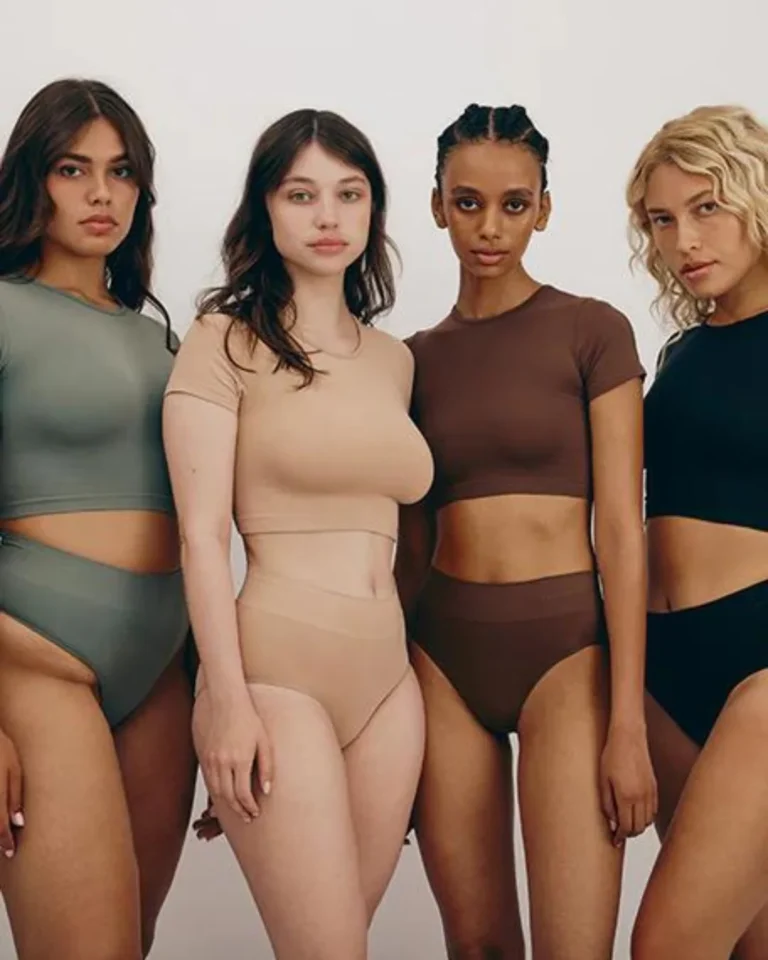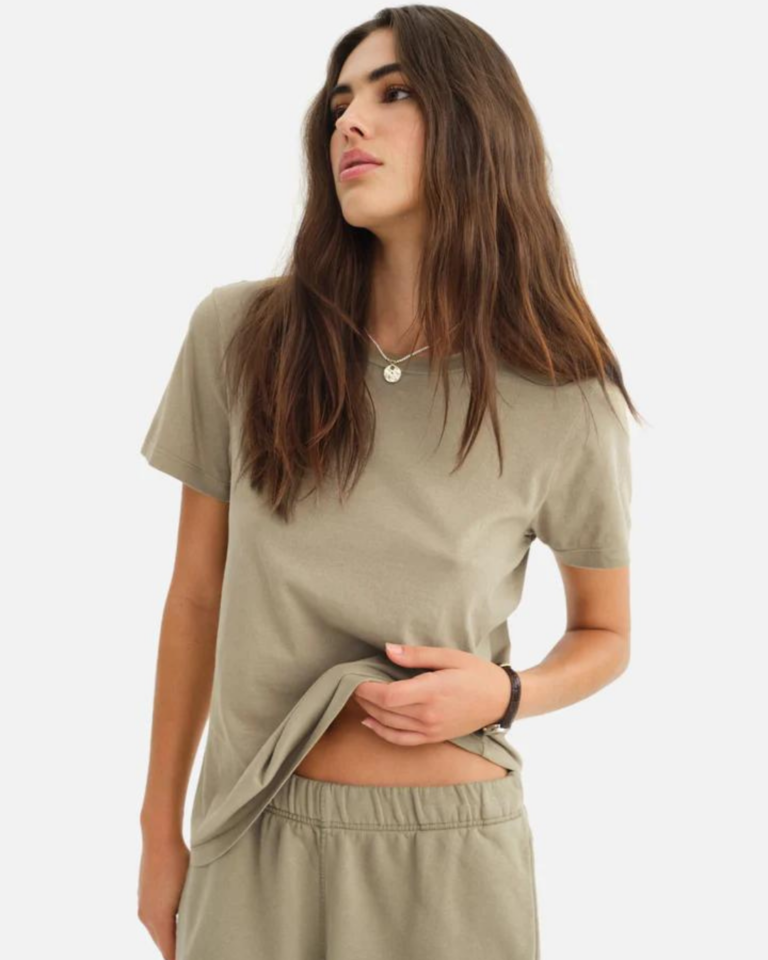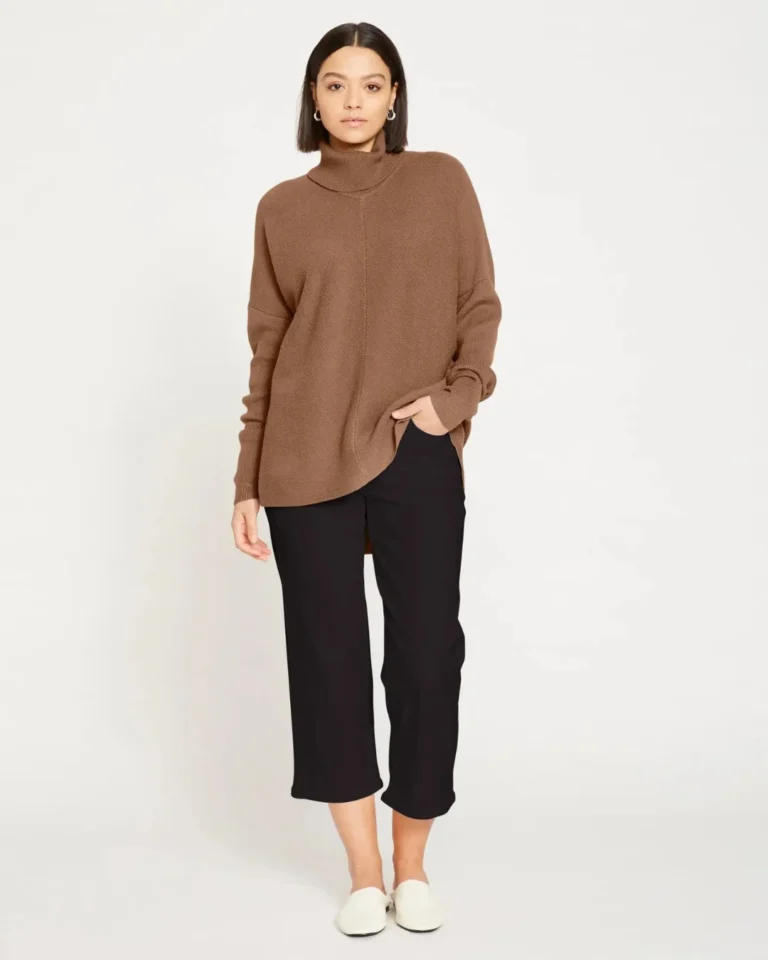SKL is reader supported. When you buy through links on our site, we may earn affiliate commission. Learn more here.
Are you new to sustainable fashion? If so, I’m so glad you’re here.
Adopting a more conscious approach to your closet is both personally beneficial and an impactful way to create change in a broken industry.
Here is your beginner’s guide to sustainable fashion!
When you are just starting your pursuit of a more sustainable closet, it can be overwhelming to know where to start and how to parse through all the information that’s out there.
If that resonates, don’t worry. This guide is going to give you a comprehensive overview of the current state of the fashion industry, why sustainability matters, and what actions you can take to build a more sustainable wardrobe.
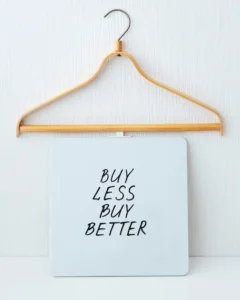
Why is sustainable fashion important?
To understand why sustainable fashion matters, let’s look at the fashion industry at large and what needs to change.
The most prevalent business model in fashion is fast fashion.
Fast fashion is defined as the “approach to the design, creation, and marketing of clothing that emphasizes making fashion trends quickly and cheaply available to consumers.”
On the surface, this may seem great.
But if you dig into the story of how a garment is made and consumed, this business model becomes problematic for everyone involved.
Fast production combined with cheap pricing creates an environment where workers are pushed to work quickly, in unsafe conditions earning low wages, to comply with the production demands of fast fashion.
THE PEOPLE.
A majority of garment workers are women living in poverty.
These women are subject to exploitation, low wages, abuse, and horrible working conditions—evidenced by the catastrophic collapse of the Rana Plaza building in 2013.
Rana Plaza in Bangladesh housed 5 garment factories that supplied big global brands. Its collapse, caused by negligence and fashion brands turning a blind eye to the conditions of the building and the workers, killed 1,132 and injured over 2,500 people. All at the expense of fashion.
The brands prioritized a larger profit margin rather than following ethical procedures to ensure the safety of the workers.
This is happening all over the world.
The fashion industry preys on countries and factories that have the least amount of regulation and need the brands’ business so these factories have no choice but to comply with the harmful production demands.
THE WASTE.
Fast fashion rips off designer styles to create popular looks with new style drops by the week, even daily.
Instead of the traditional fashion market that functions in two to four seasons, fast fashion creates 52 micro-seasons a year with how often it introduces new styles to the market.
Ultra-fast fashion has normalized hundreds or thousands of new pieces every single week.
This heightens the pressure on the factories to produce quickly and at low costs.
Low prices and rapid trend turnover creates a consumerist culture that is impossible to keep up with. With these patterns, clothing is seen as disposable.
100 billion articles of clothing are produced annually. 20% are never even sold, 40% of purchased clothing is never used, and over 50% is thrown away in the same year.
Americans throw away 11 million tons of clothing a year.
THE IMPACT.
Not only is the fashion industry harmful to the people who make the clothing, but it also hurts our environment.
The fashion industry is responsible for 2-8% of global carbon emissions.
Whether clothing is plastic-based and extracts non-renewable resources or calls for deforestation for cotton farming or uses harmful chemicals in materials sourcing, the production of clothing causes environmental degradation.
Our clothing releases microplastics, toxic dyes pollute rivers, and an excess of water is used to produce our clothes. We cannot continue to exploit our planetary resources in the face of the climate crisis.
It’s clear to see that the current fashion systems are deeply flawed.
Sustainable and ethical fashion is a response to the destructive habits in the industry.
We’ve collected more reasons why sustainable fashion matters here. But what exactly is sustainability, specifically as it relates to fashion?
What is sustainable fashion?
First, sustainability is about making thoughtful decisions today that allow for a promising future.
Sustainability considers how we use our planetary resources, how we treat people, and how we create and live in ways that allow us to meet our needs without compromising the ability of future generations to meet their own needs.
Thus, sustainable fashion centers around using clothing in a way that honors the resources and people who make the clothes without doing harm.
Sustainability and ethics are aligned in a vision for a sustainable fashion industry.
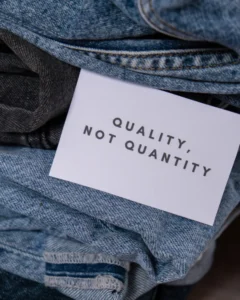
Sustainable and ethical fashion refers to all the practices of a brand in regard to the working conditions, trade, production, and environment.
It’s designing and producing clothing in a way that cares for the people involved and minimizes environmental impact.
Sustainable fashion adopts a cradle-to-cradle approach, meaning it considers the habits of the brands and consumers at the very beginning of the production process at the farming and materials stage to after the clothing is made, from marketing to use to repair and recycling.
A sustainable fashion brand considers how to eliminate waste in the design process and where exactly their resources and materials come from.
The most sustainable brands pursue circular, regenerative design and practices that better the end-of-life processes for clothing. True sustainability cannot be achieved without consideration of BOTH people and the planet.
There’s a lot to learn about sustainability. The good news is that there are many amazing resources and educators out there making sustainability easier to pursue.
How do I get started in sustainable fashion?
Now that we’ve established why we need sustainability and what it looks like generally, how do we, as individuals, incorporate sustainable fashion into our lives?
Sustainable fashion practices include how clothing is obtained, used, cared for, and then disposed of. There are many avenues to pursue sustainability, but it all comes down to eliminating the harm and waste of the fashion industry.
1. Start with what you have.
The most sustainable item will always be the one you already have.
The reason for this is that a majority of a clothing item’s impact comes at the production stage.
Thus, we want to reduce our need to buy more by making the most of what we already own. This also keeps clothing out of the waste systems for longer.
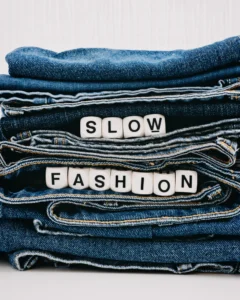
To use what you have more fully, shop your own closet for outfits you can repeat and reimagine. Create new outfit combinations out of old pieces.
You can also get creative and repurpose and upcycle pieces that could use a refresh.
Don’t be afraid to experiment with various ways to get the most use out of your garments. More guidance on making the most of your existing wardrobe can be found here.
2. Extend the life of your clothing.
Proper clothing care is essential to a sustainable wardrobe.
In order to use the pieces we have for a long time, we need to take care of them.
This means storing them properly— according to their fabric and shape— without putting undue stress on the garments.
Laundry is another important part of clothing care. Wash your clothes less, air dry, and use low-heat, low-agitation settings.
Learn repair basics! Teaching yourself basic hand-sewing techniques can go a long way in preserving your clothes.
When damage gets beyond your skills, a tailor can be a great resource to restore your clothes to great condition. Extending the life of a garment can reduce the overall impact of carbon emissions, water usage, and landfills.
When a garment no longer serves you, it’s important to consider the best second or third life for that piece beyond you. Instead of donating, try repurposing or rehoming the garment.
3. Adopt a secondhand first approach.
A secondhand first approach is a commitment to seeking out pre-loved sources to meet your needs and wants before buying new.
The goal is to take advantage of what already exists, reducing waste and consumer demand for more.
Secondhand sources to consider include:
- Friends & Family: Borrow, Swap, Gift
- Community Resources: Buy Nothing Facebook groups, Thrift stores, Estate & garage sales
- Online Marketplaces: Poshmark, Depop, Ebay, Thredup, etc…
Secondhand is a powerful way to save money, tap into your community, get resourceful, and relearn consumption.
4. Buy less. Buy better.
If you can’t find what you need within your own closet or secondhand, shop from the amazing sustainable fashion brands that are doing the work to create a better fashion industry.
When shopping new, it’s important to shop in a way that is intentional and considers the long-term outlook.
Buy pieces that are quality enough to last a long time and fit your personal style so that you’ll truly want to wear it for years to come.
The goal is to shop in a way that meets our needs and can reduce our impact. This means that we need to shop less overall, only buying pieces that we can give a long life to.
This requires us to have a keen self-awareness about our personal style, shopping tendencies, and lifestyle needs.
We don’t want to get caught up in impulse shopping. A helpful tool to negate impulse buys can be using filtering questions to walk yourself through a reflective thought process before a purchase to ensure you’re buying a piece that will truly serve you.
When it comes time to shop new, consider a brand that aligns with your values.
There are many amazing sustainable fashion designers out there. However, there are also many brands that are capitalizing on the rising interest in sustainability and using manipulative marketing to convince shoppers that they are more sustainable than they actually are.
This is called greenwashing.
To avoid greenwashing and to support truly sustainable fashion brands, look for brands that show these traits:
- Transparency
- Fair Treatment of Workers
- Better Materials
- Small-Batch Production
- Circularity & Waste-Led Design
- Third-Party Certifications
- Ethical Marketing that doesn’t Promote Excess
A sustainable fashion brand will back up their claims with data and proof of their actions. Ultimately, sustainability in the fashion industry considers both the present and future impact and acts accordingly.
Sustainable living will look different for everyone, but these are some foundational concepts you can incorporate into your pursuit of sustainable fashion.
It’s not just about what you buy (because we can’t shop our way to a better future), rather sustainability is also about our resourcefulness and appreciation for what we have. Sustainable living begins with our mindset.
It leads to contentment because it requires us to self-reflect and make intentional decisions based on our true needs.
We learn to do more with less.
And we learn to see our role in the big picture and how our individual actions can make a change.
Want to learn more? Check out these other articles on Sustainably Kind Living:
 Enter To Win Over $1500+ In Non-Toxic Goodies!
Enter To Win Over $1500+ In Non-Toxic Goodies! 
